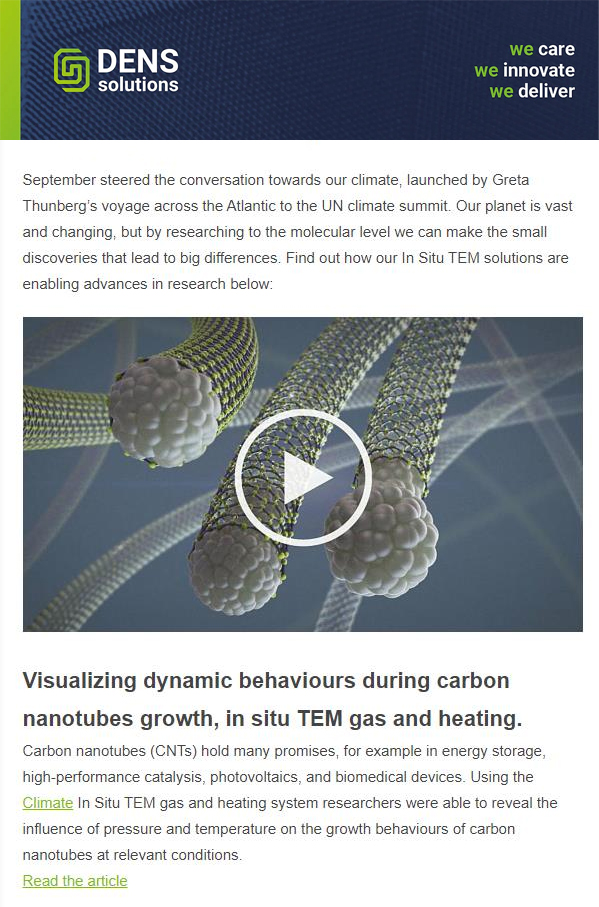
We are excited to announce that DENSsolutions has installed a Stream system at the renowned Radboud University Medical Center (Radboudumc) in Nijmegen, the Netherlands. In this article, we interview Luco Rutten, PhD Candidate at Radboudumc, to learn more about the institute’s electron microscopy center, the team’s research direction and the pivotal role our Stream system will play in advancing their bio-research initiatives.
What is the Radboudumc Electron Microscopy Center known for?
What type of applications are the EM Center’s users interested in using Stream for?
“Since the Electron Microscopy Center is part of the University Medical Center, we are especially interested in using Stream to study biological and biomimetic processes under relevant conditions. For instance, the aggregation of protein-calcium complex and the biomineralization of organic scaffolds such as collagen mimicking health and disease. By adding the dynamic information from liquid phase EM to our cryo-CLEM workflow, we can unravel the mechanisms at the nanoscale of life.”
What particular features of Stream stood out to you?
“With our aim to study biological processes, the ability of the Stream system to seamlessly approach physiological conditions is of great importance. Since life occurs at 37 °C, precise control over the temperature is critical. Moreover, with Stream we are able to control liquid flow, enabling us to work with concentrations very close to physiological conditions. Additionally, we often deal with hybrid systems composed of both organic and inorganic materials, which can limit the contrast. By controlling the bulging of the windows through adjusting the front and back pressure, we’re able to reduce the liquid thickness as much as possible.“
Could you tell us a bit more about the funding granted to acquire the systems?
“Prof. Dr. Nico Sommerdijk, the lead PI of the project titled ‘In Situ Imaging of Biological Materials with Nanoscale Resolution using Liquid Phase Electron Microscopy’, was awarded the NWO-groot grant of 1.5 million euros by the Dutch Scientific Organization to acquire state-of-the-art equipment for liquid phase electron microscopy to study biological processes. Part of this grant was used to acquire the Stream system. The aim of the program is to establish a globally unique facility dedicated to liquid phase electron microscopy on biological materials. The integration of the latest developments in software, hardware and sample preparation techniques will broaden the range of biological materials that can be investigated.”
In your experience so far, how have you found working with Stream?
“Operating the Stream system becomes quite routine after working with it a couple of times. The recent workshop organized by DENSsolutions for Stream users (see image below) provided a valuable opportunity to learn from experts like Dr. Hongyu Sun, DENSsolutions Senior App Scientist, and exchange experiences in working with the holder with other participants.“

From left to right: Dr. Hongyu Sun (DENSsolutions), Luco Rutten (Radboudumc), Yannick Rutsch (FZ Jülich) and Rebecka Rilemark (Chalmers University of Technology)

Luco Rutten
PhD Candidate | Electron Microscopy Center, Radboudumc
Luco Rutten received his Master’s degree in Chemistry and Chemical Engineering from the Eindhoven University of Technology. He is in his last year of his PhD at \Radboudumc under the supervision of Dr. Elena Macías-Sánchez and Prof. Dr. Nico Sommerdijk. As part of the Biomineralized Tissues group and the Electron Microscopy Center, he is using advanced electron microscopy to study bone mineralization mechanisms.
Discover the team’s publications:
Learn more about Stream:

